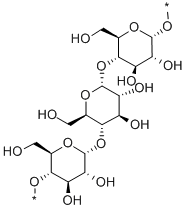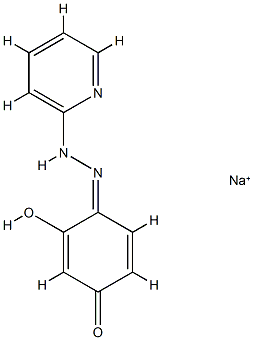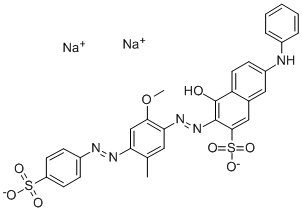AMYLOSE
- CAS NO.:9005-82-7
- Empirical Formula: C18H30O16X2
- Molecular Weight: 502.42
- MDL number: MFCD00134652
- EINECS: 232-685-9
- SAFETY DATA SHEET (SDS)
- Update Date: 2025-01-27 09:38:02

What is AMYLOSE?
The Uses of AMYLOSE
Amylose is a polyglucose polysaccharide which together with amylopectin makes starch(s). The glucosidic bonds of amylopectin are α-1,4 linkages. Amylose is used to identify, differentiate and characterize amylase(s). Amylose is used as a thickening agent, a gelling agent and emulsion stabilizer. Amylose is used in the preparation of films and membranes with potential use in drug delivery.
What are the applications of Application
Amylose from potato is a polysaccharide
Definition
The inner, relatively soluble portion of starch granules. Amylose is a hexosan, a polymer of glucose, and consists of long, straight chains of glucose units joined by a 1,4-glycosidic linkage. It stains blue with iodine. Microcrystalline amylose is available chiefly as a food ingredient and dietary energy source.
Definition
A polymer of GLUCOSE, a polysaccharide sugar that is found in starch.
Definition
amylose: A polysaccharide consistingof linear chains of between 100and 1000 linked glucose molecules.Amylose is a constituent of starch.In water, amylose reacts with iodineto give a characteristic blue colour.
Agricultural Uses
Amylose is a type of polysaccharide and is a constituent of starch. Amylose is made up of linear links of several hundred glucose molecules. A water-amylose mixture turns blue when iodine is added to it.
Purification Methods
Amylopectin is removed from impure amylose by dispersing in aqueous 15% pyridine at 80-90o (concentration 0.6-0.7%) and allowing the solution to stand at 44-45o for 7days. The precipitate is re-dispersed and recrystallises during 5days. After a further dispersion in 15% pyridine, it is cooled to 45o, allowed to stand at this temperature for 12hours, then cooled to 25o and left for a further 10hours. The combined precipitates are dispersed in warm water, precipitated with EtOH, washed with absolute EtOH, and dried in vacuo [Foster & Paschall J Am Chem Soc 75 1181 1953].
Properties of AMYLOSE
| Density | 1.6 g/cm3 |
| refractive index | 145 ° (C=2, 1mol/L NaOH) |
| storage temp. | room temp |
| solubility | 0.05 M NaOH: 1 mg/mL, slightly turbid, colorless |
| form | A solid |
| color | White to off-white |
| Merck | 8798 |
| Stability: | Hygroscopic |
| EPA Substance Registry System | Amylose (9005-82-7) |
Safety information for AMYLOSE
| Signal word | Warning |
| Pictogram(s) |
 Exclamation Mark Irritant GHS07 |
| GHS Hazard Statements |
H319:Serious eye damage/eye irritation |
| Precautionary Statement Codes |
P264:Wash hands thoroughly after handling. P264:Wash skin thouroughly after handling. P280:Wear protective gloves/protective clothing/eye protection/face protection. P305+P351+P338:IF IN EYES: Rinse cautiously with water for several minutes. Remove contact lenses, if present and easy to do. Continuerinsing. P337+P313:IF eye irritation persists: Get medical advice/attention. |
Computed Descriptors for AMYLOSE
AMYLOSE manufacturer
New Products
3-Iodophenylacetic acid 3-Pyridineacetonitrile, α-hydroxy- 2-Propanamine, 1-chloro-, hydrochloride (9CI) 3-(hexyloxy)-4-(pyridin-3-yl)-1,2,5-thiadiazole 2-Hexyn-1-ol Dibenzo-18-crown-6 Nickel(II) perchlorate hexahydrate, 98% 4-Bromophenylacetonitrile, 95% 3-Bromo-4-fluoroaniline, 97% Sodium tetraborate decahydrate, 98% Palladium(II) acetate, trimer, Pd 99% 4-Bromo-2-chlorotoluene, 97% N N Dimethylformamide Dimethyl Acetal (Dmf Dma) 2,3-Dichloro Benzoyl Cyanide [Side Chain] Bis(2-Chloroethyl) Amine Hydrochloride L-Glutamic Acid Diethyl Ester Hydrochloride 5-(Difluoromethoxy)-2-Mercaptobenzimidazole 1-Ethyl-3-(3-Dimethylaminopropyl)-Carbodiimide Hydrochloride [EDC Hcl] 1,4-Napthoquinone Bromoiodomethane Sodium Bicarbonate Methylene Dichloride (MDC) Ethyl Acetate Indole-3-Carbinol (I3C)Related products of tetrahydrofuran








You may like
-
 9005-82-7 Amylose 98%View Details
9005-82-7 Amylose 98%View Details
9005-82-7 -
 9005-82-7 99%View Details
9005-82-7 99%View Details
9005-82-7 -
 Amylose 9005-82-7 98%View Details
Amylose 9005-82-7 98%View Details
9005-82-7 -
 Amylose, from potato starch CAS 9005-82-7View Details
Amylose, from potato starch CAS 9005-82-7View Details
9005-82-7 -
 Amylose From Potato Starch CAS 9005-82-7View Details
Amylose From Potato Starch CAS 9005-82-7View Details
9005-82-7 -
 Amylose from potato CAS 9005-82-7View Details
Amylose from potato CAS 9005-82-7View Details
9005-82-7 -
 Cyclohexane, (2-propynyloxy)- 67967-07-1 98+View Details
Cyclohexane, (2-propynyloxy)- 67967-07-1 98+View Details
67967-07-1 -
 132945-75-6 (S)-1-Boc-3-methanesulfonyloxy-pyrrolidine 98+View Details
132945-75-6 (S)-1-Boc-3-methanesulfonyloxy-pyrrolidine 98+View Details
132945-75-6
